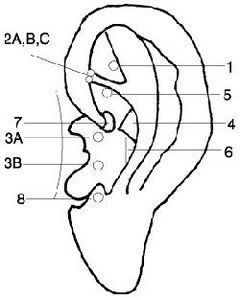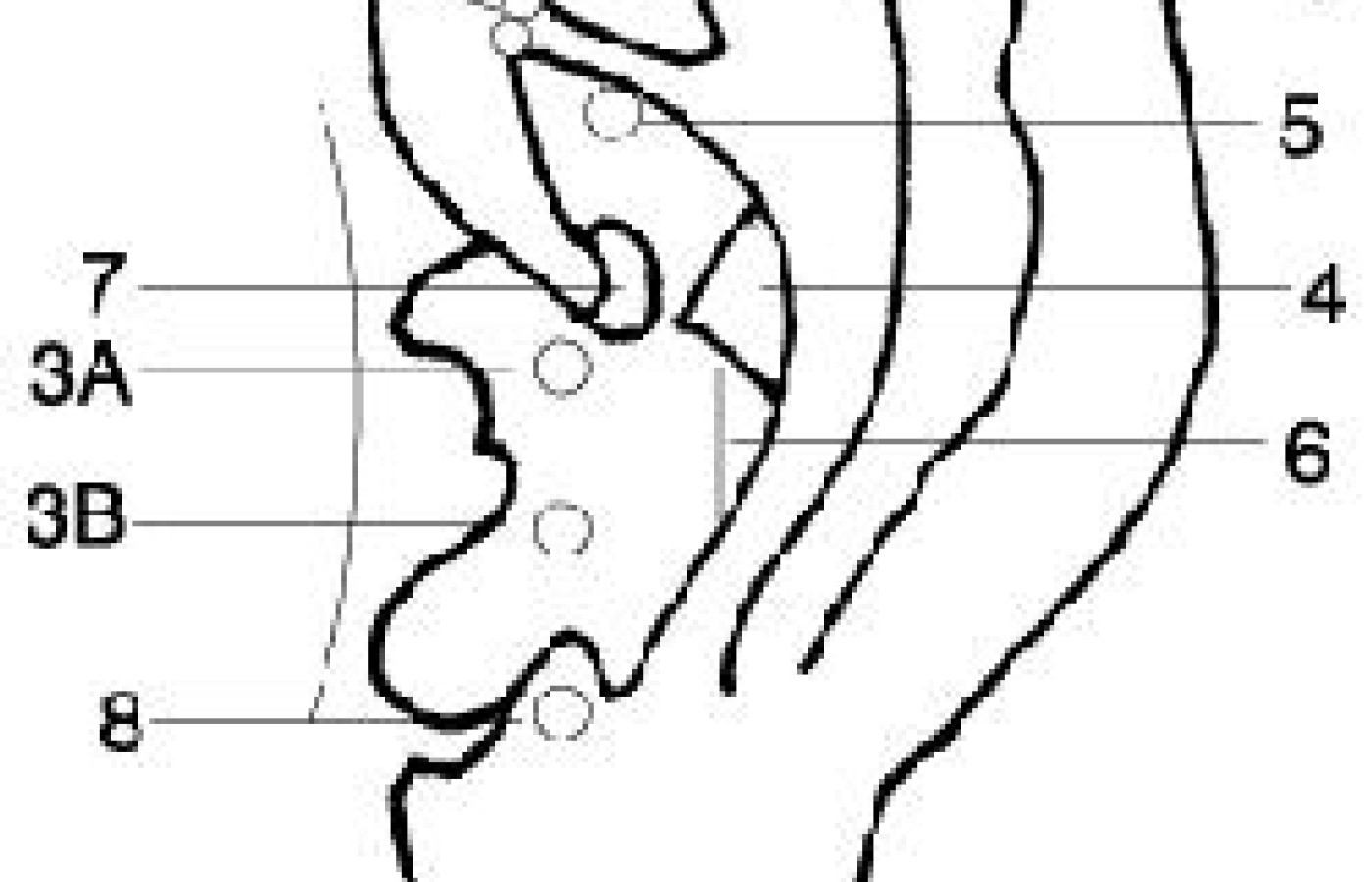Whether you accept it, avoid it or live somewhere in between, insurance coverage has become a defining issue for our profession. Patients increasingly expect to use their benefits, practitioners want to be compensated fairly for their time and expertise, and the system itself remains – at best – fragmented. The encouraging news is that coverage has expanded in meaningful ways. The challenging news is that reimbursement, across the board, remains inadequate.
Immune Enhancement for Oncology Patients through Auricular Acupuncture
With close to 5,000 years of history, Chinese medicine has become adept at recognizing the signs and symptoms of the healthy human organism. It has developed and refined treatment modalities which redirect, cultivate and maintain proper physiological functioning. The essential Chinese treatment plan for patients diagnosed with cancer is to support normal cellular, tissue and organ physiology in the wake of the ravaging (and yet life-saving) techniques that characterize the most common allopathic approaches to cancer: surgery, drug therapies and radiation. Utilizing these standard treatments, augmentation with Chinese medical treatment not only relieves many side effects caused by these therapies but has also been shown clinically to strengthen the patient from the cellular level to the spiritual.
The Chinese treatment modalities most effective in the treatment of the whole person - and likewise the cancer - include internal and external herbal therapy; auricular acupuncture; body acupuncture; moxibustion (a combined heat/herbal therapy); and guided imagery. Patients respond well to these treatments, many of which are simple to learn, easy to administer, and are both cost and clinically effective because they are based on the Chinese world view, which recognizes the patterns of the proper flow of energy (or proper physiology and functioning).
Documented increases in white blood cell production; heightened energy; regrowth of hair; increased libido; decrease in nausea, vomiting, low appetite, abdominal distention, loose stools or constipation; alleviation of depression, anxiety, fear, irritability or other emotional aberrations; quicker wound healing capacity and response to infection; decrease in skin irritation, dry skin and muscular weakness; regulation of weight loss, thirst and pain; improvement in respiration - in short, an overall improvement in the quality of life, both in terms of physical problems and what they affect - these are the primary signs and symptoms with which Chinese medicine produces results. A broad range of systemic clinical manifestations is addressed, but ultimately, through this style of medicine, immunity is enhanced.
Chinese medicine is time-tested, person-oriented, and clinically applicable to the devastating illnesses of our time such as cancer. Although ancient, it parallels innovative techniques being developed to address this difficult disease, emphasizing the intimate relationship between the person and the planet, cultural stresses, nutrition and genetic inheritance.
The secret to Chinese medicine's success lies in its artistry: its ability to view each person as a unique constellation of energy or symptoms, not as a disease. The key to this ability is that while it certainly recognizes and can categorize and differentiate clinical manifestations into a disease pattern, it never sees the body, mind and spirit as separate. Fundamentally, the preponderance of symptoms are viewed as rooted in spirit. As the primary Chinese medical text, Neijing, the Yellow Emperor's Classic of Internal Medicine reminds us: "In order to cure disease, one must first establish contact with a patient's spirit." Chinese medicine has the tools to do so.
Such complementary therapies should be sought out for the benefit of the patient and are consonant with the general coals of the Cancer Advisory Panel on Complementary Medicine (CAPCAM), the National Cancer Institute (NCI), and undoubtedly any physician's deepest desires.
In the last year, I supervised a group of student interns in a private setting of Western physicians using Oriental medicine in the treatment of oncology patients undergoing Western medical intervention. This was an innovative experience, using the tools of Oriental medicine to support a large group of patients who consistently sought treatment in a fast-paced, heavily scheduled medical doctor's office. Due to the unique nature of this clinical setting, we began with a quick, easy treatment of utilizing auricular acupuncture on these patients.
A core presentation was designed with the combined purposes of addressing the side effects of allopathic treatment, the nature of the illness, and the person as a whole. It was employed in numerous ways: in its essence as described here, it was used as the skeletal outline of a treatment in which points could be added, deleted or used in combination with other treatment modalities. These points and their energetic functions are described below. Their locations are also illustrated in the diagram that follows.
Standard Ear Treatment to Enhance Immunity
1. Shenmen: perhaps the most important point in this prescription. Used to quiet the heart, calm the spirit and ground the patient. Establishes contact with the patient's spirit and puts the patient into a state of receptivity for treatment. According to the Su Wen, "When the heart is serene, all pain is negligible." Regulates the blood as it pertains to the heart. Reduces insomnia, anxiety, palpitations, neurasthenia and restlessness; neutralizes toxins; and cures inflammation.
2. Sympathetic (any of its three locations): decreases pain by increasing vasodilation. Improves circulation. Relaxes the sympathetic nervous system. Balances the autonomic nervous system. Improves overall functioning.
3. Lung (upper or lower): as the master of the qi, it increases energy, improves respiration, sends energy to the kidney and moves the liver (metal controls wood). Relieves depression and strengthens wei qi functioning. Aids in skin problems such as decreased wound healing capacity and decreases dry and irritated skin.
4. Liver: promotes the free flowingness of qi, maintains the internal potency of qi, and regulates the relationship between the internal and external environment. Moves qi and blood which may be stagnant. Balances the emotions. Builds yin and blood.
5. Kidney: to tonify the root qi, the basis of our immunity. Assists in hair regrowth and increases libido.
6/7. Spleen and stomach: to reinforce the qi of the middle jiao (for nausea and vomiting; assists in digestion and improves appetite). Reduces damp/phlegm, thereby reducing thirst and abdominal distention. Controls the blood and blood vessels. Grounds the patient and strengthens muscles. Builds blood.
8. Brain (subcortex): for fatigue, anxiety, swelling, shock, etc. Regulates cerebral excitation and pain perception. Regulates all body symptoms and neurological functioning. Reduces inflammation. Benefits the mind. For insomnia and neuropsychiatric disorders.

Add or delete points based upon signs and symptoms if needed.
Needles and magraine pellets were most commonly employed. For patients whose constitution was relatively stronger, or for those who could not have body acupuncture done (for instance, they could not lie down comfortably or a room was not available), 36g ear needles chosen for patient comfort were to the standard depths of insertion (approximately .01 cun). A strong stimulus obtained by twirling was performed, and the needles were retained for 15-30 minutes. The opposite ear was then reinforced with pellets so that the patient could continue to receive the benefit of treatment.
For needle sensitive or weakened patients, gold magraine pellets were affixed to the ear for 3-5 days. Patients were instructed to gently massage the pellets for between 3-5 seconds several times a day and return to the clinic or remove them if they could not come in for treatment, since ear infection is possible in patients who are already immunocompromised. Regardless of the type of cancer, patients' response to this method was favorable. Most patients reported an abatement of nausea and fatigue and an improvement in appetite, sleep, stools, stamina and emotional attitude. On those patients whom treatment worked best, patients reported they could tell the difference between having the pellets in or out of the ear. They felt better with the pellets in the ear.
This simple yet effective treatment plan can be used to assist patients in not only managing the devastating symptoms of chemotherapy, radiation or cancer such that the quality of daily living is improved; it simultaneously augments the vital qi of the body, which is the basis of all health.



